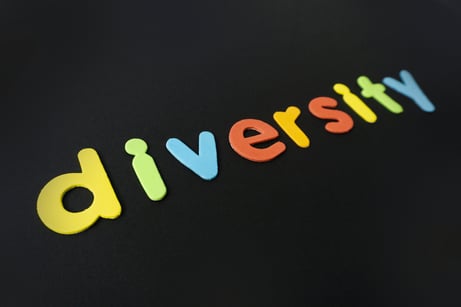Workplace Diversity and Inclusion
A lot has been said about diversity and inclusiveness. But it can't be treated as just another box to tick. There are real reasons to value workplace diversity and inclusion — and there's more to support than just being open to it.
Why are Diversity and Inclusiveness Important?
Apart from the obvious social and humanitarian aspects of diversity and inclusion, there are very real business-related reasons to value them. Diversity and inclusiveness fuel innovation. When you welcome everyone to the table, you also welcome all points of view to the table. And these points of view might have radically better and interesting ways of solving problems.
There have been studies that show that groups of men and groups of women both underachieve compared to mixed-gender groups. When we value diversity, we grow stronger, together.

What's the Difference Between Diversity and Inclusiveness?
Diversity refers to having a large amount of representation. You don't have to have minority representation for every minority group out there. But likewise, your group shouldn't be homogenous. But being diverse doesn't mean you're inclusive. Inclusiveness means that all voices are also listened to. You can have a group of minority employees but they may feel disenfranchised; you're diverse but not inclusive.
Best Practices for Diversity and Inclusiveness
If you're trying to develop an atmosphere of both diversity and inclusiveness, what can you do? It's not hard, but it does take work.
-
Actively involve all parties. Make sure that minorities at the table feel listened to. Make sure that you're actively trying to ensure that everyone has a voice and that everyone is able to contribute equally.
-
Question your model of "professionalism." Traditionally, models of professionalism have favored the idea of a professional: a middle-class white male. Things like traditional Black hairstyles have been considered "unprofessional." Today, we need to think more about what we think is "unprofessional" and whether that might be culturally rooted.
-
Create supportive, inclusive groups. Often, minority groups may feel that they need a safe space. Supportive, inclusive groups within the company can be designed not only to provide this support but also to ensure that the company is actively working toward doing better. Not every company may be able to be perfectly diverse and inclusive right away. It's important that progress is being made.
-
Actively establish diversity goals. Diversity doesn't just happen. Most companies are going to retain a status quo if diversity isn't prioritized, simply because that has already become the company culture. It's important that companies have diversity goals not only to continually move toward them but also to see where they might be falling short.
-
Ask your employees what they think. A key mistake is trying to push for diversity without engaging minority employees. You can't just make a better world for people and you can't just radically change an office because of what you think people want. Engage with minority employees. Ask them whether they think a good job has been done. Ask them where you can do better.
It's important to recognize that diversity and inclusiveness are active, not passive. You must be moving toward diversity rather than just "letting it happen." But once the pieces fall into place, you'll find that having a diverse, inclusive, and supportive working dynamic is its own benefit.





